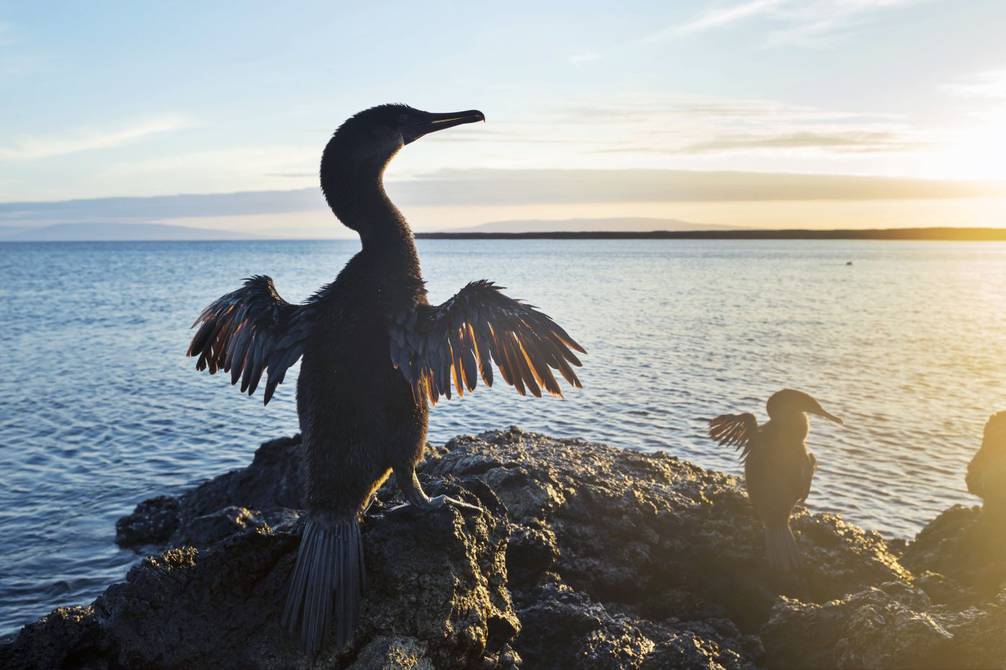RIO DE JANEIRO, BRAZIL – Ecuador is analyzing an environmental debt swap to create a new reserve around the Galapagos archipelago to expand fishing quotas through negotiation between all parties involved, said Gustavo Manrique, Minister of Environment, Water and Ecological Transition.
“Without a doubt, we are considering evaluating a debt swap for the creation of a new reserve,” said the head of the environmental portfolio, acknowledging that “there is indeed a proposal for a very significant amount.”
Read also: Check out our coverage on Ecuador
The current Galapagos Marine Reserve is at the center of an initiative that confronts the Ecuadorian fishing sector and conservationists, who have proposed a US$1 billion sovereign debt swap to expand the current protected area around the archipelago by 312,000 square kilometers.

SECOND LARGEST MARINE RESERVE IN SOUTH AMERICA
Ecuador has the second largest marine reserve in the region, an area equivalent to 13.3% of the Exclusive Economic Zones (EEZ) waters, all those within 200 nautical miles from the coastline
The proposal, which was presented to the previous government of Lenín Moreno and is currently being negotiated by President Guillermo Lasso, had the initial claim of expanding the protected area from the current 133,000 square kilometers to 445,000.
“When the government took over the administration, there were two positions: one was 450,000 square kilometers of marine reserve for conservationists, and the one for fishing and industrialists was zero,” said Manrique, an agronomist engineer and former president of the Latin America Green Awards at the Foundation of the same name.
But as he approaches 90 days in office, the new Ecuadorian president, he says, has managed to bring positions closer together.
“The conservationists are proposing a 100+ thousand square kilometers and the fishermen are saying, I agree that we should reach an agreement to protect the marine corridor Galapagos, Coco (Costa Rica), Coiba (Panama), Malpelo (Colombia),” he said.
This is the Marine Corridor of the Eastern Tropical Pacific (CMAR), which forms a migratory route for species not targeted by fishing, such as sharks, sea lions, turtles, and whales.
The Ecuadorian minister stressed that the dialogue is based on “consensus”, “will,” and the “understanding that it is necessary” to reach an agreement based on the global agreement 3030, according to which countries with access to marine areas should have 30% of their areas protected by 2030.
In line with the debate, last month U.S. actor Leonardo DiCaprio, who has promoted a petition for the governments of Ecuador, Costa Rica, Colombia, and Panama to commit to protecting the tropical Pacific, celebrated the latter country’s announcement to expand its marine protected area to 30% and pledged US$43 million for Galapagos conservation.
DEBT-FOR-NATURE SWAP
Ecuador closed 2020 with a public debt of US$63.163 billion, which then represented 65.3% of GDP, according to data from the Ministry of Finance.
The environmental project promotes a “debt-for-nature” swap. It is based on the purchase of Ecuador’s 2030 debt bonds with an approximate 40% discount on amortization, which would guarantee oversight of the expanded maritime area, according to the proposal put forward by a coalition of NGOs, including the local Más Galápagos.
This includes resources for the Ecuadorian Navy to patrol and control an eventual expanded protected area.
Manrique said that rather than being an exchange, it would be a “swap” or financial exchange agreement on the international debt acquired by Ecuador. Along these lines, the conversations are being held so that, for example, “the payment term can be doubled and freeing up cash flow.”
On the other hand, the bondholders of this type of green investment have assured the government that a proportion equivalent to around 30% of the debt will be exempt of interest in the framework of a financial solution that starts with the creation of a trust in exchange for the protection of the reserve.
The head of the Environment ministry stated that the creation of the new marine reserve has an impact on conservation, but also on the social and economic aspects and implies a million-dollar investment for the Ecuadorian State: “It is a new child, and we must have the resources to carry it forward.”
But at the same time, he expressed his optimism with respect to some conversations “in which we already agree that we have to expand” and in which they are analyzing “how much, how and which fishing gear” will be banned.
Located some 1,000 kilometers off the continental coasts of Ecuador, the Galapagos Islands were declared a Natural World Heritage Site by UNESCO in 1978 for their rich biodiversity acting as a hotbed of unique species in the world.

